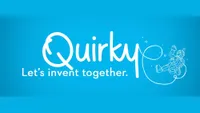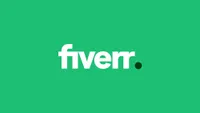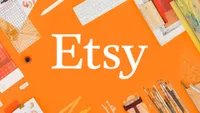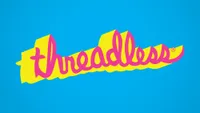How to make quick money from home
All you need is a computer

Let’s be positive. Forget the credit crunch and the age of austerity – we’re going to help you make some money. Don’t worry if you’re no Alan Sugar; thanks to the internet and your PC, all you need is a good idea.
If you don’t even have one of those, you can transform your spare time into cash – legally. This isn’t a guide to selling old vinyl on eBay or flogging knackered paperbacks on Amazon. We’ve done our homework, trawled the web and put together a list of new, exciting and innovative ways in which technology can help you make money. We’ll explore topics such as human intelligence tasks – jobs that computers and software can’t do, but are essential to the functioning of an electronic business.
All you need do is sign up for a service, set aside a few hours and do the jobs you’re assigned. It might not be glamorous work, but if you have a PC and some time to spare, it’s a great way of earning some extra cash. If you’re feeling brave, we’ll also explore how to start your own electronic business in a thoroughly modern way.
- Check out our roundup of the best small business software
- And here's our list of the best small business website builders
- We've also featured the best online marketing services
Back in the pre-wired age, the banks held all the cards. If you wanted to start a business, you had to convince your bank manager that your great idea was profitable. Today you can forget the big four. If you have an ambition to launch an amazing venture, all you need to do is convince a community of lenders. If they’re happy with your plan, the cash will turn up. The equation works the other way, too. If you have some savings and fancy being a venture capitalist, read on.
Before we get stuck into making our fortunes, a word of warning: keep your wits about you. The web is groaning with scams and scammers. We’ll look at a few classic examples, but it pays to be aware of potential cons and fraud. The internet is a great place to make cash – just remember the old adage: if it sounds too good to be true, it probably is. You’re putting your livelihood on the line starting a new business. Either hit these schemes prepared to lose, or take a small risk.
Peer-to-peer lending

Peer-to-peer lending, or social banking, uses the principle of crowdsourcing. Let’s say you want to borrow a couple of grand to start an online T-shirt business. Sign up to Zopa and you can get a loan at a very attractive rate of interest, plus a flat fee.
The money comes from a network of lenders, not a bank, and it pays to be a lender, too. At Zopa, for example, the average generate projected return is between 2.0% - 5.3%, which is actually a lot better than most short-term savings accounts.
Sign up to the TechRadar Pro newsletter to get all the top news, opinion, features and guidance your business needs to succeed!
What if a borrower can’t pay back the money? So far, Zopa has done pretty well on that front, achieving a net default rate of 2.5 percent and Zopa Plus 3.5 percent in 2020. But your investment doesn’t go to one person – it’s seeded throughout the community. If one person defaults, it’ll have little impact on your return as a lender.
Zopa is the frontrunner in this area, but other sites offer a similar service. You may get a better return from Funding Circle, for example. The main difference for borrowers is that there’s no flat fee. Instead, a portion of the loan is paid to the service. Funding Circle prefers business customers, while Zopa is open to anyone who has a good credit rating.
You can get a better return if you’re willing to take a higher risk. That’s how it works at FundingKnight. Borrowers post loan requests and you can choose who you want to lend money to. You put in a bid for that loan, setting your own interest rate. The return on investments averages at 10.8 percent, but although all borrowers are screened, it’s somewhat riskier than lending to the crowd. If a borrower defaults, a debt collector may be called in to pursue your investment.
Make money for tiny tasks

Computers have removed lots of boring and repetitive tasks from the workplace, but they’ve created a fair few, too. That’s where Amazon’s Mechanical Turk comes in. Small tasks that can’t be performed by software are farmed out to its subscribers, who turn the job around for a few cents at a time. That name? It’s from an 18th-century sideshow attraction.
A chess-playing robot was toured around Europe, amazing audiences with its apparent skill. It was, however, controlled by a human hidden from view. The micro-jobs that are tendered at Mechanical Turk (called HITs or human intelligence tasks) could be any quick, computer-related duty.
In a typical session, a user might do a bit of data entry or fill in a questionnaire. The more HITs you complete in the allotted time, the more you earn. With many HITs offered at just a few cents a task, it requires dedication to earn a crust – but there are advantages, too.
You can work from home doing as much or as little as you want, at any time of day you want. And tasks that require more thought and effort pay more. If Mechanical Turk’s rewards seem too paltry, there are similar, more specialized services to choose from. MicroWorkers offers higher rates, but the tasks are in the grey marketing category, with HITs requiring that you sign up for dating sites and blogs, or review items on Amazon.
Finally, there’s Just Answer. Here, you get to use your expertise to answer live queries from users. You need some qualifications in the field you choose and your credentials are displayed to users so they can see you have the relevant expertise. The system works on a bidding basis.
As a provider, you scan the listings for live questions you can answer. If you can help, you set a price. It’s up to the user whether they agree to pay or look for a better deal. New providers take 25 percent of the fee, while more seasoned experts get a 50 percent cut.
Four ways to make free money
Advertise on your website

The easiest way to start serving ads from your site, and earning money, is Google AdSense. A chunk of code is provided for you to paste into your site when you sign up. People browsing your site see adverts that fit its content and keywords.
The cash-per-click model means that every time a visitor clicks on a link, you get a share of the fee the advertiser paid. Google doesn’t publicize the exact percentage of the pie that you’ll get, but some keywords offer a bigger slice than others. Some AdSense users have seen earnings over $1,000 a month. It’s hard to track which keywords are the real winners, even though there are several blogs and websites that claim to list the highest paying AdSense keywords. Is it worth shelling out for these lists?
You can use Google’s own AdWords tool to suggest related keywords for free. It’ll help you optimize your content for more targeted ads. Don’t click ads on your own page, and don’t think asking your friends to click on them will help you either. Google considers this click fraud, and employs sophisticated tracking mechanisms to protect its revenue. You’re more likely to get a swift, permanent ban than any extra income.
If you want to make money with AdSense, just make good, consistent content aimed at a small audience. For more control over ads, try affiliate linking. You either take a percentage of all the sales you refer to the service provider, or you get simple cash for clicks.
Amazon Associates is a highly visible example. Sign up for access to tools that let you create banners, badges and text links to any item on the site – just make sure that the products you choose are relevant to the content you already carry. When someone clicks an Amazon affiliate link on your site, you’ll get nine percent of the cash they spend. Easy money.
Make money with videos

Technically, it’s easy for anyone to prepare a home video for publication online. You can upload video at HD resolutions on YouTube, for example – and the service takes care of the compression at various resolutions for you. YouTube also accepts video in QuickTime, MPEG, Windows Media format or as an AVI file.
Once you’ve clicked the ‘Upload’ button, it’s really straightforward. The tough part isn’t making videos – it’s growing an audience. You’ll need that audience to make money. It’s easy to see which are YouTube’s most popular videos. Just go to the home page while not logged into an account (or using incognito mode), where you can pick the most popular videos in your region.
First, cuteness. Cute kids and cute animals. If it’s funny as well as cute, it’s YouTube gold. As of January 2021, the number one video of all time is the ‘Baby Shark Dance’. One way to hedge your bets is to ride the slipstream. For a short time, Rebecca Black parodies and mashups were nearly as popular on YouTube as the original video. Catch the next viral smash at the beginning of its ascent, then make a video that rides its coat-tails and your efforts will benefit from the reflected glory.
It’s tricky to time correctly but pays dividends if you do. Instructional videos do well, too, but that subject really deserves a separate discussion because there’s an entire secondary market in tutorial videos. Get the video views and those eyeballs on your work can be translated into cash. The YouTube Partner Program enables you to place advertising on your clips and earn money for every viewing.
Be aware, though, that it’s really tough to get in. What’s more, YouTube doesn’t reveal hard figures but it does publish testimonials. There are alternatives to YouTube that let you earn revenue from adverts without having to build a following first, such as Vimeo.
Sell your photos

Digital photography enjoys a brilliant synergy with PCs and the web. Millions of us enjoy uploading pictures to photo sites such as Flickr, or sharing images with friends on Facebook and Twitter. That’s not all you can do, though – with a little extra work, you could be earning cash with your camera taking stock photographs and selling them online.
There are two markets in stock photography. At the high end are images produced by professionals. These include shots of news events, celebrities and difficult setups. Usage rights for these sell for hundreds of pounds. Your entry point is through microstock – where royalty-free images are licensed for commercial use at very low prices, from which you take a percentage cut.
Like many other online enterprises, this is a volume business. The key is to create popular images that lots of people will want to use. Handily, several microstock sites publish guidelines revealing exactly what kinds of images they’re after and what they don’t want.
iStockPhoto, for example, reveals that seasonal themes and corporate imagery are big sellers, while shots of fruit on white backgrounds are passé. However, the main requirement is that your shots should be well-composed, at a sufficiently high resolution, well lit and in focus. Basic photography skills will serve you well here.
Other potential markets include Shutterpoint. This is a community-orientated stock repository, with a ‘stack ’em high, sell it low’ ethos that works well if you can produce popular images that will sell in volume. Another particularly good bet is Shutterstock, a more formal and established presence that enables you to make up to $30 for each image sold – and images can be sold for use multiple times.
If you’d rather go straight for the higher end of the market, you can sell your photography direct to users from your own site. PhotoShelter offers a set of tools that enable you to do so, taking care of digital photo storage and payment systems, while you have control over what you sell. The catch is a fixed fee, from $12.99 a month.
Publish an eBook

Self-published ebooks are an ideal format for niche ideas. Secrets of mind reading and make-up techniques of the stars are ideal topics. Arcane expertise could net you a profit, too. Perhaps you rebuilt an old car from scratch. There are probably a few hundred other people who’d tackle the same project with your guidance.
Self-publishing with ebooks is easier than ever – especially with iTunes and Kindle publication now real options. You don’t even have to create a special format for Kindle books. The Kindle Direct Publishing program accepts digital manuscripts in plain text, HTML or Microsoft Word DOC formats. That’s the older Word format, by the way, not DOCX.
You can use PDF, but Amazon book publishers have reported problems with formatting. There’s a form to fill in, enabling you to categorize the book, add an ISBN and add Digital Rights Management. Authors report that making changes to the submission after the fact is laborious, so make sure every detail is correct and your text has been proofread.
Next, you set a price and keep 70 percent of the mark-up from every sale. Formatting books for Apple iBooks – the free book store app for the iPad – is more involved. You need to output to the ePub protocol, supported in Apple’s Pages application, Adobe InDesign. Alternatively, you can convert to ePub using the open-source tool Calibre. From there, the submission system is similar to KDP.
One final service that is more than worth a mention is Smashwords. It makes the process of publishing to multiple formats and outlets easier – and it accepts digital manuscripts in DOC format. With one submission to Smashwords, you can have that all-important ISBN number sorted out and publish your book to the Nook and Sony’s eReader store, as well as the Smashwords site. It even publishes to Apple iBooks.
Recommended money-making websites
Quirky
Got a good idea but don’t know how to get it off the ground? That’s what Quirky is for. The website helps nurture inventions from initial concept through to manufacturing and sale. Not all ideas make it through the process – but Quirky aims to bring two new products to market every week. The process is similar to open-source software design. Your idea is mooted to a community of users, and if they think it will be successful, they help with research, design and testing. Once it goes to market, everyone gets paid. Inventors receive a little more cash than the influencers who develop the design.
Fiverr
What would you do for five dollars? The microworking concept is stretched to silly extremes with Fiverr, a website that allows people to post adverts that offer any service they can think of. The rule is that it should cost five dollars. You’ll find folk making Kermit the Frog birthday videos, creating one minute voiceovers – even doing dream interpretation. This is the fun side of the Mechanical Turk concept. Users can post their own requests for tasks, too. It’s fascinating to see the gulf between what people are prepared to offer for $5 and what others expect to receive for that amount.
Upwork
Upwork is the most prominent of a new breed of websites that enable prospective employers to find freelance workers for their creative projects. Designers, illustrators, copywriters, proofreaders, ghost writers, coders, developers and more all ply their trade here. Companies and individuals place job listings on the site, soliciting bids for the work from members of the community. Good freelancers who use the service build up a reputation on the site, using a system similar to the star ratings on eBay, so prospective employers can make an informed choice about the contractors they use.
Etsy
If you’ve never visited Etsy before, imagine a craft fair packed with stalls run by hipsters. Etsy is a virtual version of that. Sellers who sign up build their own online shops full of handmade jewellery, knitted monkeys, repurposed knick-knacks and art prints. For buyers, it’s a way to find unique and quirky items. For sellers, it’s a step up from marketing their wares on eBay; Etsy is a specialist outlet with its own identity and branding that extends to its users. Get on there while it’s still cool, because it certainly won’t be long before Etsy is trumped by the next trend in online crafts.
Threadless
For designers, Threadless is a superb showcase for their wit and skills. Simply set up an account and upload some of your best artwork, and those designs are then made into T-shirts. It's free to get started and you can set your own prices. For example, if you choose to set your own prices and sell 100 t-shirts in a week at $25 each, that’s an extra $1000 in additional weekly income in your pocket.
Kickstarter
Kickstarter is like an online equivalent of Dragon’s Den, specializing in creative, entrepreneurial projects. It’s a way to connect people who have big, potentially commercial ideas with real investment. Every project comes with its own web page, where creators can sell the benefit of their idea, whether it’s an ice-cream business or a web service. Money is crowdsourced from Kickstarter’s community.
Hirewriters
There’s a good chance you write. Maybe you’ve got a blog on the go or just a penchant for stringing words together in a creative way. Good news! You can make money writing commissioned pieces, and you don’t need any experience or contacts. There is a downside, that being that you will be paid peanuts when you start out working for HireWriters, and the money doesn’t get much better. The maximum is $20 when you’re established with the service, so unless you’re a proficient and quick writer and can handle a lot of work without your brain melting, this is unlikely to become a way to make a living.
Lulu
Kindle, Smashwords and iBooks are brilliant for wordy projects, but we’re still a while away from the viable coffee table ebook. At Lulu you can turn ebooks into real, tangible volumes made of paper. It’s ideal for image-rich tomes, and you can take a cut of every copy sold after Lulu has absorbed production expenses and taken its share of profit. Using the service takes a little more savvy than Kindle publishing. You need to create a PDF with a fixed layout, but Lulu provides templates and guides for all its most popular book sizes. It’s not the only bespoke publisher out there, but it’s the biggest.
Crowdology
People want to know what you think, so much so that they will pay money to hear it. Think that sounds ludicrous? Well, it’s not. There are countless services you can sign up for that will reward you for filling in sometimes long and tedious surveys. Crowdology is just one of these services, but we like it because you can use it the other way, too; if you’ve got a business that you’re trying to get off the ground, you can arrange with Crowdology to have one of your own surveys put to its eager audience of paid info-givers. You should be prepared for a few spurious answers, though.
- We've also featured the best business plan software








